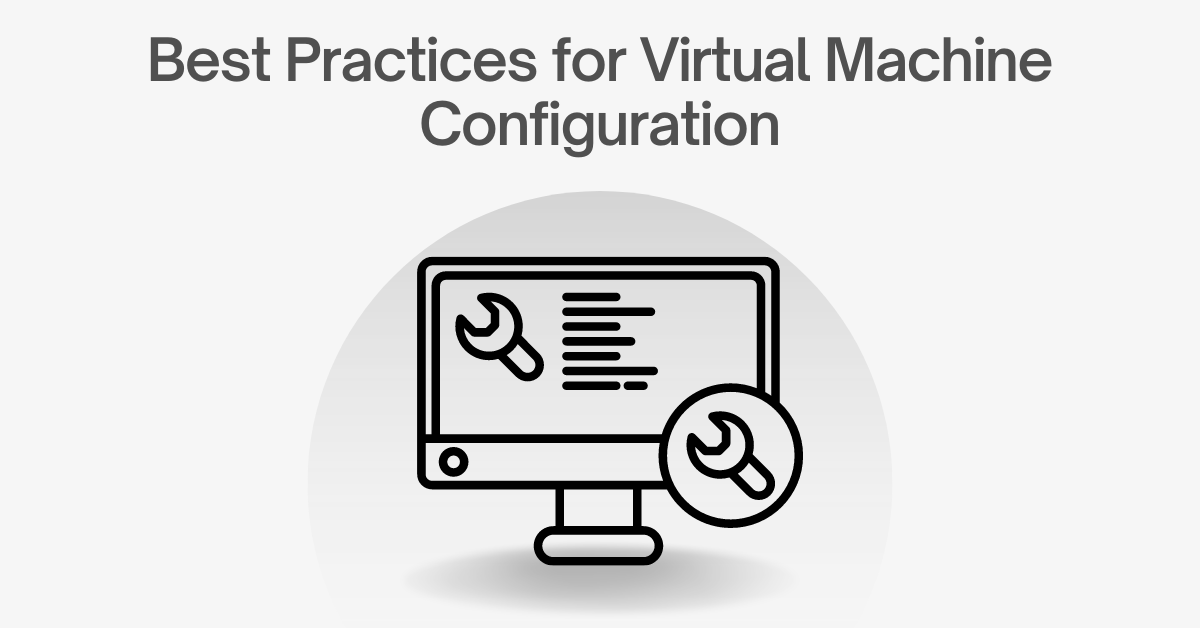Introduction to Configuring Virtual Machines
Virtual machines (VMs) are powerful tools that allow multiple operating systems and applications to run on a single host machine. This is especially helpful for testing software, evaluating apps, and running old apps that are no longer supported by their original operating systems. However, in order to get the most out of your VMs, you must first understand how to properly configure them.
When setting up a VM, it’s important to think about the processor, memory, storage, and security features that are available. The processor should be set up so that it can handle the necessary workloads and applications without slowing down the system. Memory configuration should ensure that there is enough RAM to support applications and workloads, as well as enough virtual memory to prevent RAM from running out. Storage should be configured so that slow disk access does not degrade VM performance. Lastly, security issues should be dealt with to make sure the VM is safe from threats from the outside.
In this article, we’ll go over the best practices for configuring virtual machines. We’ll talk about processor, memory, and storage configuration, as well as security issues. By following these best practices, you can make sure that your virtual machines run well and safely.
Processor Configuration
When setting up a virtual machine, processor configuration is one of the most important things to think about. The processor should be set up so that it can handle the required workloads and applications without slowing down the system. This means that it should have enough power to handle the workloads and applications, but not too much power that is wasted.
When configuring the processor, keep the number of cores and threads in mind. In general, more cores and threads mean more power, which can aid in multitasking and running complex applications. It’s also critical to consider the processor’s clock speed, which is measured in gigahertz (GHz). The higher the clock speed, the faster the processor can work.
It is also critical to consider the type of processor. Intel and AMD are the two largest processor manufacturers. They both produce a diverse range of processors with varying features and capabilities. For example, Intel’s Core i7 processor is more powerful than the Core i5 processor, and AMD’s Ryzen 7 processor is more powerful than the Ryzen 5 processor.
When configuring the processor for a virtual machine, it’s also important to consider how many virtual cores and threads will be required. In general, the more cores and threads, the better the performance. However, it is critical to ensure that the virtual machine is not overprovisioned, as this can result in performance issues and wasted resources.
Finally, when configuring a virtual machine, it’s critical to consider the processor type. In general, Intel processors are more powerful than AMD processors, with Intel’s Xeon processors being the most powerful. It’s also important to think about the architecture of the processor because that will affect which operating systems and applications can be used.
By setting up the processor correctly, you can make sure that your virtual machine has enough power to handle workloads and applications without being over-provisioned. This will allow your VM to run at peak performance.
Memory Configuration
Memory configuration is another important consideration when configuring a virtual machine. It’s important to make sure there is enough RAM to support the applications and workloads, as well as enough virtual memory to avoid running out of RAM.
When configuring memory for a virtual machine, it’s important to consider the type of RAM that is available. Generally speaking, DDR4 RAM is faster and more efficient than DDR3 RAM. Additionally, it’s important to consider the amount of RAM that is available. Generally speaking, more RAM is better, as it can help with multitasking and running complex applications.
It’s also important to consider the size of the virtual memory that is available. Virtual memory is a type of RAM that is used when the physical RAM is full. It’s important to make sure there’s enough virtual memory, since that can help keep performance problems to a minimum.
It’s also important to consider the type of operating system that is being used. Generally speaking, Windows and Linux require more RAM than macOS. Additionally, it’s important to consider the applications and workloads that will be running on the VM, as these can have an impact on the amount of RAM that is required.
Finally, it’s important to consider the type of virtualization technology that is being used. Generally speaking, VMware and Hyper-V require more RAM than other virtualization technologies. Furthermore, the type of workloads and applications that will be running on the VM should be considered, as these can have an impact on the amount of RAM required.
By setting up the memory for your virtual machine correctly, you can make sure there is enough RAM to handle the applications and workloads and enough virtual memory so that you don’t run out of RAM. This will help to maximize the performance of your VM and ensure that it is running at peak performance.
Configuration of Storage
Storage configuration is an important consideration when configuring a virtual machine. It is critical that the VM’s performance is not hampered by slow disk access. This means that the storage should be set up to give the applications and workloads the performance they need.
When setting up storage for a virtual machine, it is important to think about the type of storage that is available. Solid State Drives (SSDs) are generally faster and more reliable than Hard Disk Drives (HDDs). It is also necessary to consider the amount of storage available. In general, more storage is better, as it can aid in the storage of large files and applications.
It is also critical to consider the type of file system being used. In general, NTFS is the most popular file system for Windows, while ext4 is the most popular file system for Linux. Also, the type of virtualization technology used must be thought about because it can affect the type of file system that can be used.
It’s also important to think about what kinds of applications and workloads will be running on the VM. Databases and file servers, in general, require more storage than web servers or email servers. Also, the type of data that will be stored on the VM should be thought about because it can change how much storage is needed.
Finally, it is critical to consider the available storage technologies. Most of the time, RAID and SAN are more reliable and perform better than NAS, but they cost more. Also, the type of backup and disaster recovery solutions that are available should be thought about because they can affect how storage is set up.
By setting up your virtual machine’s storage correctly, you can make sure that slow disk access doesn’t hurt its performance. This will help to maximize the performance of your VM and ensure that it is running at peak performance.
Considerations for Security
When configuring virtual machines (VMs), security is an important consideration. When virtual machines are set up correctly, it is less likely that bad people will be able to get into the system and see any data that is stored on it. There are a number of things you can do to keep your virtual machines safe.
First, make sure your VMs are running the most recent antivirus and anti-malware software. This will aid in the protection of your system against malicious actors and malware. It’s also important to make sure that your VMs are running the latest version of their operating system and any software or apps that have been installed on them. Outdated versions may contain exploitable vulnerabilities. You should also think about using a virtual firewall to protect your virtual machines from malicious traffic. This will help make sure that all traffic coming in and going out is watched and, if needed, blocked.
You should also turn on two-factor authentication for any accounts that can be accessed through the VMs. If a bad person gets a hold of a user’s credentials, this will help stop them from getting in without permission.
Finally, you should think about enabling VM isolation. This helps make sure that the VMs are kept separate from each other, so that bad people can’t get into other VMs on the system. It’s also critical to keep an eye on your VMs for any unusual activity. This will help you find any bad people or malicious software that may have gotten into the system.
By following these best practices for virtual machine security, you can ensure that your virtual machines are secure and safe from bad people and malware. This will help make sure that your data is safe and secure and that your virtual machines are running well.
Conclusion
When setting up virtual machines (VMs), you must take the time to make sure they are set up correctly. This means setting up the processor, memory, and storage, as well as making sure the VMs are safe. By following the best practices in this article, you can ensure that your VMs are running well and securely.
It’s also critical to keep your virtual machines up to date. This means keeping the VMs’ operating systems and any software or apps they have installed up to date. This will help make sure that security flaws in old versions of the software on your virtual machines don’t put your virtual machines at risk.
Finally, it’s critical to keep an eye on your VMs for any unusual activity. This will help you find any bad people or malicious software that may have gotten into the system. Follow the steps in this article to make sure that your VMs are safe and running at their best.

